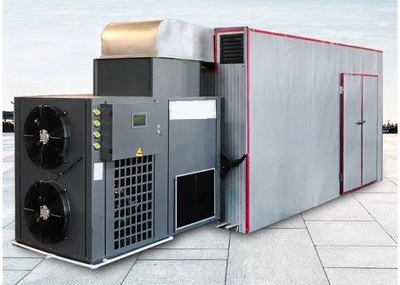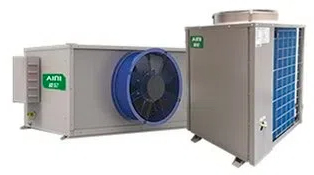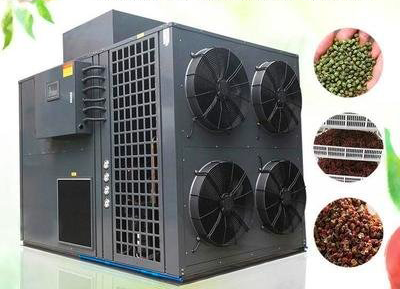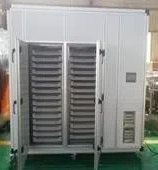
Content Menu
● Introduction
● Understanding the Basic Principle
>> The Core Components
● The Drying Process
>> Step-by-Step Operation
● Key Benefits of Heat Pump Dryers
>> Energy Efficiency
>> Fabric Care
>> Environmental Impact
● Advanced Features
>> Smart Technology Integration
>> Specialized Programs
● Maintenance and Care
>> Regular Maintenance Tasks
>> Troubleshooting Tips
● Installation Considerations
>> Space Requirements
>> Optimal Placement
● Economic Analysis
>> Long-term Savings
● Future Developments
● Conclusion
● Frequently Asked Questions
>> Q1: How does a heat pump dryer differ from a conventional dryer?
>> Q2: Are heat pump dryers worth the investment?
>> Q3: Do heat pump dryers require special installation?
>> Q4: How long do heat pump dryers last?
>> Q5: Can heat pump dryers handle all types of fabrics?
Introduction
Heat pump dryers represent a revolutionary advancement in laundry technology, offering an energy-efficient and fabric-friendly alternative to conventional dryers. This comprehensive guide explores the intricate workings of heat pump dryers, their benefits, and why they're becoming increasingly popular in modern homes.
Understanding the Basic Principle
A heat pump dryer operates on a sophisticated closed-loop system that recycles and reuses hot air to dry clothes. Unlike traditional dryers that expel warm, moist air outside, heat pump dryers capture and process this air through a unique heat exchange system.

The Core Components
The system consists of several key components:
- Evaporator
- Compressor
- Condenser
- Expansion Valve
- Heat Exchanger
- Collection Tank
The Drying Process
Step-by-Step Operation
1. Initial Air Heating
The process begins when room-temperature air enters the system and passes through the heat pump unit.
2. Moisture Extraction
As warm air circulates through the drum, it absorbs moisture from the clothes.
3. Heat Exchange
The moisture-laden air passes through the evaporator, where it's cooled and dehumidified.
4. Air Recycling
The dried air is reheated and circulated back through the drum, creating an efficient closed loop.
Key Benefits of Heat Pump Dryers
Energy Efficiency
Heat pump dryers excel in energy conservation, using significantly less power than conventional dryers. This efficiency stems from their ability to reuse heated air rather than continuously generating new heat.
Fabric Care
The lower operating temperatures of heat pump dryers provide several advantages:
- Gentler on fabrics
- Reduced risk of shrinkage
- Less color fading
- Extended clothing lifespan
- Prevention of heat damage
Environmental Impact
These dryers contribute to environmental sustainability through:
- Reduced energy consumption
- Lower carbon footprint
- Minimal heat emission
- Water conservation
- Sustainable operation

Advanced Features
Smart Technology Integration
Modern heat pump dryers often include:
- Moisture sensors
- Smart connectivity
- Custom programs
- Energy monitoring
- Remote control capabilities
Specialized Programs
These dryers offer various specialized cycles:
- Delicate care
- Quick dry
- Eco mode
- Heavy duty
- Mixed load
- Wool care
- Sports wear
Maintenance and Care
Regular Maintenance Tasks
To ensure optimal performance:
- Clean lint filters
- Empty water container
- Check heat exchanger
- Clean moisture sensors
- Inspect door seal
- Monitor ventilation
Troubleshooting Tips
Common issues and solutions:
- Extended drying times
- Unusual noises
- Poor drying results
- Error codes
- Water collection problems
Installation Considerations
Space Requirements
Important factors include:
- Room dimensions
- Ventilation needs
- Power supply
- Drainage options
- Access for maintenance
Optimal Placement
Consider:
- Temperature conditions
- Humidity levels
- Air circulation
- Accessibility
- Noise impact
Economic Analysis
Long-term Savings
Despite higher initial costs, heat pump dryers offer:
- Reduced energy bills
- Lower maintenance costs
- Extended appliance lifespan
- Decreased fabric wear
- Improved efficiency
Future Developments
The technology continues to evolve with:
- Enhanced efficiency
- Faster drying times
- Improved sensors
- Smart home integration
- Eco-friendly features
Conclusion
Heat pump dryers represent a significant advancement in laundry technology, offering superior energy efficiency, fabric care, and environmental benefits. While they require a higher initial investment, their long-term advantages make them an increasingly popular choice for modern households.

Frequently Asked Questions
Q1: How does a heat pump dryer differ from a conventional dryer?
A: Heat pump dryers use a closed-loop system that recycles hot air through a heat exchanger, while conventional dryers generate heat continuously and expel warm air outside. This makes heat pump dryers more energy-efficient and gentler on clothes.
Q2: Are heat pump dryers worth the investment?
A: Yes, while the initial cost is higher, heat pump dryers typically pay for themselves through reduced energy consumption, lower operating costs, and better fabric care over their lifetime.
Q3: Do heat pump dryers require special installation?
A: Heat pump dryers generally require standard electrical outlets and don't need external venting. However, they do need adequate space for ventilation and regular access for maintenance.
Q4: How long do heat pump dryers last?
A: With proper maintenance, heat pump dryers typically last longer than conventional dryers due to their gentler operation and advanced technology.
Q5: Can heat pump dryers handle all types of fabrics?
A: Yes, heat pump dryers are suitable for most fabrics and often provide better care than conventional dryers due to their lower operating temperatures and specialized programs.












